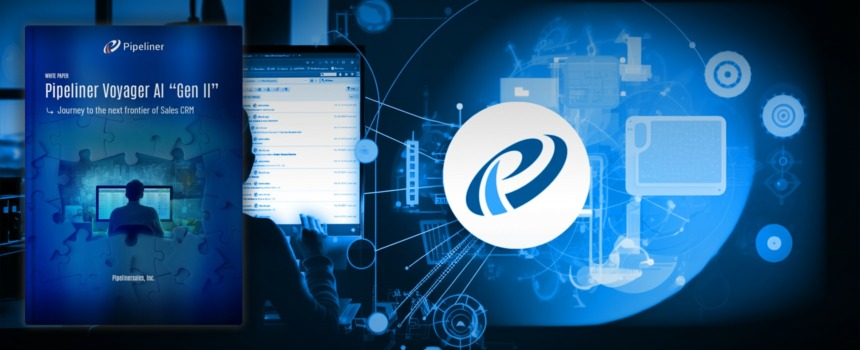Unlocking the Power of AI in CRM: Insights from Pipeliner CRM Sales Corporation
In a recent live session on LinkedIn, Nikolaus Kimla, CEO of Pipeliner Sales Corporation, and Don Araldi, EVP of the company, delved into the transformative AI features integrated into their CRM system, Pipeliner CRM. This blog post will break down the key themes and insights from their discussion, providing actionable advice and detailed explanations to help you leverage these advancements in your CRM strategy.
Introduction to AI in CRM
Artificial Intelligence (AI) is revolutionizing the way businesses manage customer relationships. By automating routine tasks, providing deep insights, and enhancing user experience, AI-powered CRM systems like Pipeliner CRM are setting new standards in the industry. Nikolaus Kimla and Don Araldi highlighted several AI features in Pipeliner CRM designed to streamline operations and drive sales efficiency.
Key AI Features in Pipeliner CRM
1. AI-Powered Mobile App
The mobile app is a cornerstone of Pipeliner CRM’s AI capabilities, allowing users to manage their CRM on the go. Here’s a closer look at its features:
- Voice Commands and Natural Language Processing (NLP): The mobile app leverages NLP to understand and execute voice commands. This allows sales representatives to update records, schedule meetings, and retrieve information hands-free, enhancing productivity and reducing manual entry errors.
- Real-Time Data Sync: The app ensures that all data entered via mobile is instantly synchronized with the central CRM system. This real-time update feature is crucial for maintaining data accuracy and consistency across the organization.
- Contextual Insights: By analyzing user behavior and historical data, the app provides contextual insights and recommendations. For instance, it can suggest the best time to contact a lead based on past interactions, increasing the chances of a successful engagement.
2. AI Email Assistant
Email remains a critical communication tool in sales, and Pipeliner CRM’s AI email assistant is designed to optimize this channel:
- Automated Email Drafting: The AI assistant can draft emails based on predefined templates and past communication patterns. This not only saves time but also ensures that the messaging is consistent and personalized.
- Follow-Up Reminders: The assistant tracks email interactions and sets reminders for follow-ups. This feature helps sales reps stay on top of their communication, ensuring that no lead falls through the cracks.
- Sentiment Analysis: By analyzing the tone and sentiment of email responses, the AI assistant can gauge the lead’s interest level and suggest appropriate next steps. This insight is invaluable for tailoring follow-up strategies and improving engagement rates.
3. Duplication Checker
Data duplication is a common issue in CRM systems, leading to inefficiencies and inaccuracies. Pipeliner CRM’s AI-powered duplication checker addresses this problem effectively:
- Intelligent Matching Algorithms: The duplication checker uses advanced algorithms to identify and merge duplicate records. It goes beyond simple field matching, considering factors like contact history and interaction patterns to ensure accurate deduplication.
- User Alerts and Suggestions: When potential duplicates are detected, the system alerts users and provides suggestions for merging records. This proactive approach helps maintain a clean and reliable database.
- Continuous Monitoring: The duplication checker continuously monitors the CRM for new duplicates, ensuring that the database remains clean over time. This ongoing vigilance is essential for maintaining data integrity and supporting effective decision-making.
Future AI Developments in Pipeliner CRM
Nikolaus Kimla and Don Araldi also shared exciting insights into the future AI developments planned for Pipeliner CRM. Here are some highlights:
- Predictive Analytics: Future updates will focus on enhancing predictive analytics capabilities. The system will provide more accurate sales forecasts and identify potential opportunities and risks by analyzing historical data and identifying trends.
- Advanced Personalization: Pipeliner CRM aims to further personalize user experiences by leveraging AI to understand individual preferences and behaviors. This will enable more tailored recommendations and interactions, improving user satisfaction and engagement.
- Integration with Third-Party Tools: To provide a seamless experience, Pipeliner CRM plans to integrate its AI features with popular third-party tools and platforms. This will allow users to leverage AI insights across their entire tech stack, enhancing overall efficiency and effectiveness.
Actionable Advice for Leveraging AI in Your CRM Strategy
To fully harness the power of AI in your CRM strategy, consider the following tips:
1. Embrace Automation
Automate routine tasks to free up your team’s time for more strategic activities. Use AI to handle data entry, email drafting, and follow-up reminders, allowing your sales reps to focus on building relationships and closing deals.
2. Leverage Data Insights
Utilize AI-driven insights to make informed decisions. Analyze customer interactions, sentiment, and behavior to tailor your approach and improve engagement. Predictive analytics can help you identify trends and opportunities, enabling proactive decision-making.
3. Maintain Data Quality
Ensure your CRM data is accurate and up-to-date by using AI-powered tools like duplication checkers. Regularly monitor and clean your database to support effective decision-making and improve efficiency.
4. Personalize Customer Interactions
Use AI to understand individual customer preferences and behaviors. Tailor your communication and interactions to provide a personalized experience, enhancing customer satisfaction and loyalty.
5. Stay Informed About AI Developments
Keep up with the latest AI advancements and updates in your CRM system. Regularly review new features and capabilities to ensure you leverage AI’s full potential in your CRM strategy.
Key takeaways:
Integrating AI in CRM systems like Pipeliner CRM is transforming how businesses manage customer relationships. By automating routine tasks, providing deep insights, and enhancing user experience, AI-powered CRM systems drive efficiency and effectiveness in sales operations. By embracing these advancements and following the actionable advice provided, you can unlock the full potential of AI in your CRM strategy and achieve tremendous success in your sales efforts.
Stay tuned for more updates from Pipeliner Sales Corporation as they continue to innovate and enhance their AI capabilities, bringing even more value to their customers.
Our Host
John is the Amazon bestselling author of Winning the Battle for Sales: Lessons on Closing Every Deal from the World’s Greatest Military Victories and Social Upheaval: How to Win at Social Selling. A globally acknowledged Sales & Marketing thought leader, speaker, and strategist, he has conducted over 1500 video interviews of thought leaders for Sales POP! online sales magazine & YouTube Channel and for audio podcast channels where Sales POP! is rated in the top 2% of most popular shows out of 3,320,580 podcasts globally, ranked by Listen Score. He is CSMO at Pipeliner CRM. In his spare time, John is an avid Martial Artist







